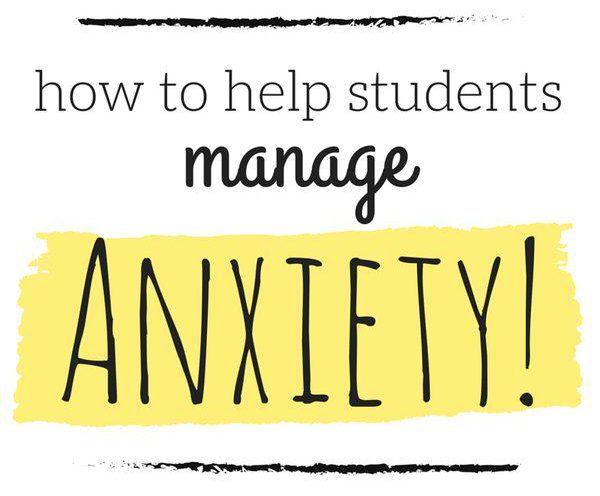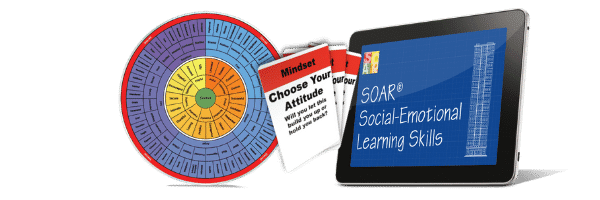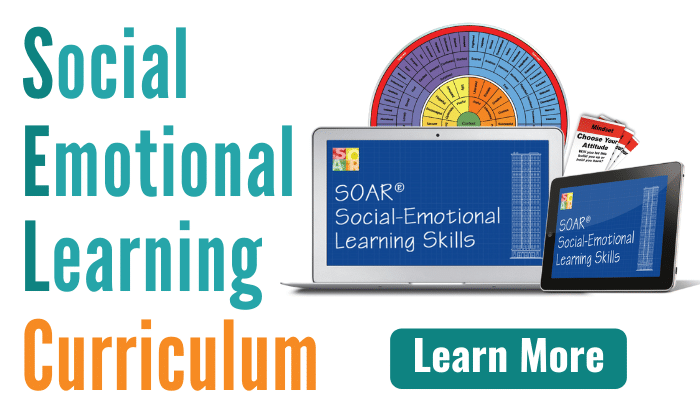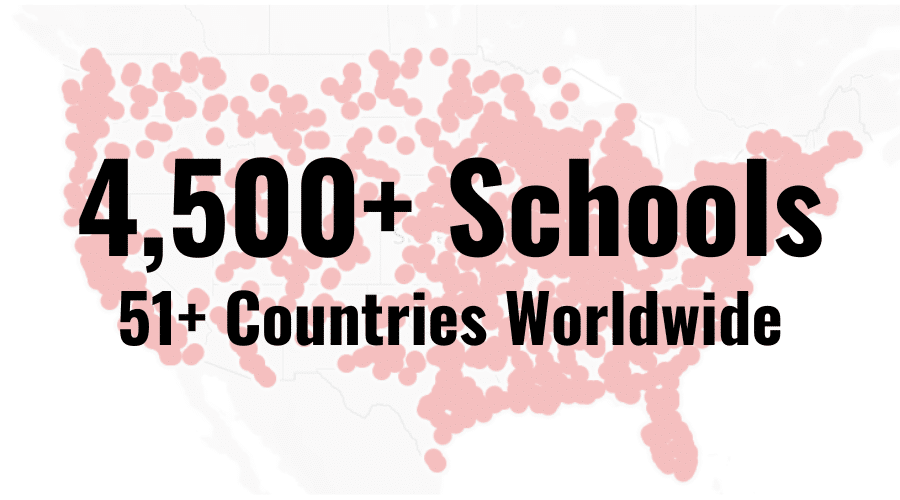How to Help Students Manage Anxiety
The key to helping students manage anxiety is to understand what’s happening in their brain.
“Emotions are the on/off switch to learning,” says Priscilla Vail, author of Smart Kids with School Problems. You and I both know this is true.
We know from our own experience that it’s pretty hard to learn geometry theorems when we are heartbroken over a break-up. A history lesson about something from 200 years ago doesn’t mean much when we’re worried about an argument with a friend… or, worse.

Our students are carrying all kinds of worries throughout the day. Perhaps there is a specific situation weighing them down. Maybe they’re carrying a lifetime of “struggle” in school. Or, perhaps they’re imagining something to be worse that it is.
Anxiety is a function of self-preservation. It helps us monitor for threats to our safety. Think back to caveman days; anxiety was a very helpful function when a tiger was lurking. But, in our modern society, it often gets in the way more than it helps.
Meanwhile, we are really good at trying to talk people out of anxiety:
- “Don’t worry.”
- “There’s nothing to be upset over.”
- “Just settle down.”
How many times do these lines actually work? Zero. Zip. Nada.
Yet, we keep saying them. We do this because we don’t know what else to do. But, the real key to helping students manage anxiety is to understand what’s happening in their brain.
How the Brain Works
Try this simple activity right now: use your index finger to trace your spinal column. Start at the base of your neck. Follow it up to the base of your head. This is the path all information travels as it enters your brain. From there, it travels through three regions of the brain…
 Region 1: The Emotional Center of the Brain
Region 1: The Emotional Center of the Brain
The Emotional Center is the first section of the brain to receive information. This region triggers and processes emotions. The Emotional Center of the brain is very primitive. It has only three modes:
“Red alert! Danger!” Mode – Whether a tiger is stalking you, or a friend said something mean on your way to class… both situations are a threat. The tiger is a threat to your physical safety. The friend’s comment is a threat to your emotional safety. But, the Emotional Center doesn’t care. A threat is a threat. And all threats trigger “Red alert! Danger!” mode.
When triggered into “Red alert! Danger!” mode, the brain goes… on alert! It pulls chemicals from the rest of the brain to prepare for the danger lurking ahead. That means the rest of your brain has limited functionality in “Red alert! Danger!” mode.
“Green Zone” Mode – When you are experiencing joy and engagement, the Emotional Center switches into Green Zone. In the Green Zone, the brain actually manufactures brain chemicals, flooding the rest of the brain with valuable power for thinking, creating, and reasoning.
“Neutral” Mode – This is our default mode. It is somewhat relaxed, yet always alert as it scans for threats. Neutral Mode does not restrict the flow of brain chemicals like “Red alert!” mode does. Yet, it does not create new brain chemicals, as the “Green Zone” does. As the name suggests, it is… neutral.
Region 2: Organizing/Self-Management Center of the Brain
The Organizing/Self-Management Center of the Brain helps us make decisions. If the brain is in the Green Zone or Neutral Mode, information will travel past the Emotional Center, into Region 2. This section helps us manage our time. It helps us organize our assignments in school. It helps us change our behavior when we are in the classroom versus out with our friends. It also helps us calm down and manage our feelings when we are upset.
Region 3: The Learning Center of the Brain
This is the region of the brain that processes information, stores it for long-term recall, and solves problems. This region is the center for our highest level of thinking and processing.
The Brain Biology of Anxiety
Anxiety is the brain’s response to worry. It triggers “Red alert! Danger!” mode in the Emotional Center of the brain. It creates a vicious cycle, pulling more and more chemicals from the rest of the brain.
The more anxiety escalates, the more the other regions of the brain shut down. This is why “talking” someone out of anxiety doesn’t work. The regions of the brain that process rational problem-solving and self-management are held hostage by the anxiety storm raging lower in the brain.
So, how can you help students manage anxiety if “talking them out of it” doesn’t work?
3 Steps to Manage Anxiety
1. Change their physiology.
When an anxiety loop is firing in the brain, it’s sucking brain chemicals from the rest of the brain. The parts of the brain that manage logic, language, and self-management shut down. So, the only way to stop an anxiety loop is to interrupt the cycle of brain chemicals. Fortunately, there is an easy way to do that.
Move! Physical movement is like a nuclear power plant for the brain. The more aerobic the movement, the more chemicals the brain produces. When a student is stuck in an anxiety cycle, send them on a walk or have them do 20 jumping jacks. Maybe both. The more severe the anxiety, the more movement needed to give the brain time to settle down.
There are two additional ways to modify brain chemicals., but they take more time and patience. Often, a person dealing with anxiety doesn’t have much patience. Yet, they can still be useful in certain situations:
- Deep breathing. Slowing down the heart-rate does slow the anxiety cycle.
- Emotional Freedom Technique (EFT): EFT releases negative emotions simply by tapping specific meridian points on the body. (“How to” videos are widely available online.) One simple EFT technique is to have students massage the “webbed” space between their index finger and thumb for 30 seconds. Then, alternate hands.
2. Name what’s happening.
Once the anxiety has settled, help the student identify what is upsetting and why it’s upsetting. (It’s often helpful to start this conversation while walking with the student, to keep the anxiety from triggering again.) Have them name the specific feelings that were triggered, using a feeling wheel.There are several reasons why naming the feelings and identifying the problem work:
- The process pulls the situation out of the Emotional Center of the brain and into the higher-processing centers of the brain.
- Naming the problem and feelings makes them more manageable.
- Naming the feelings actually gives the student control over them and makes them less scary.
- Students are better able to discover solutions when they’ve taken time to clearly identify the problem.
- As their teacher, you can better guide them to solutions when you better understand what has them concerned.
3. Build students’ skills for managing the situation.
Help your students build skills for managing the anxiety by teaching them the information in this article. Help them understand what’s happening when anxiety is triggered. Help them understand what will work and what will not work.
Teach this information before its needed so it can be “heard” when it is needed.
Secondly, help your students build their skills for managing the situations that triggered the anxiety in the first place. Often, anxiety is triggered in school over learning or organizing challenges. When students are empowered with strategies for navigating those challenges, the situations stop triggering anxiety.
Conclusion
Anxiety severely limits –and often blocks– all logical and rational problem-solving regions of the brain. So, don’t expect to talk someone out of anxiety or rationalize with them. When students don’t respond to verbal coaching, they aren’t being difficult or defiant. The biology of their brain simply makes it impossible for them to think with reason.
To help a student break out of an anxiety spell, get them moving! Aerobic activity is the fastest, most effective way to break the virtuous cycle of anxiety.
Next, get them talking about the problem. Have them describe what the problem is, why it is bothering them, and how they feel about it using a feeling wheel. To get our SOAR® Feelings Wheel, sign up for our “How Do I Feel?” Curriculum Kit in the blue box on the right of this page.
This process does many things, it: draws the problem up to higher regions of the brain, minimizes the sense of “threat,” gives students a great sense of empowerment over the situation, and helps them better identify potential solutions.
Finally, build their skills. Build their skills for managing the anxiety and skills for managing the situation that triggered the anxiety. To learn more about skills for overcoming stress and anxiety, check out the SOAR Social-Emotional Learning Curriculum.
To your students’ success,

Susan Kruger Winter, M.Ed.
"How Do I Feel?"
Curriculum Kit
Get It FREE!
Includes the SOAR Feelings Wheel, Coping Cards, Full Lesson,
& Information on...

Delivering Student Skills in
Self-Awareness, Self-Management,
Social Awareness, & Responsibility
SOAR® in the News
The SOAR® Curriculum
The most critical learning, organizing, and communication skills needed for school. Learn more here.
Who’s Using SOAR®?




